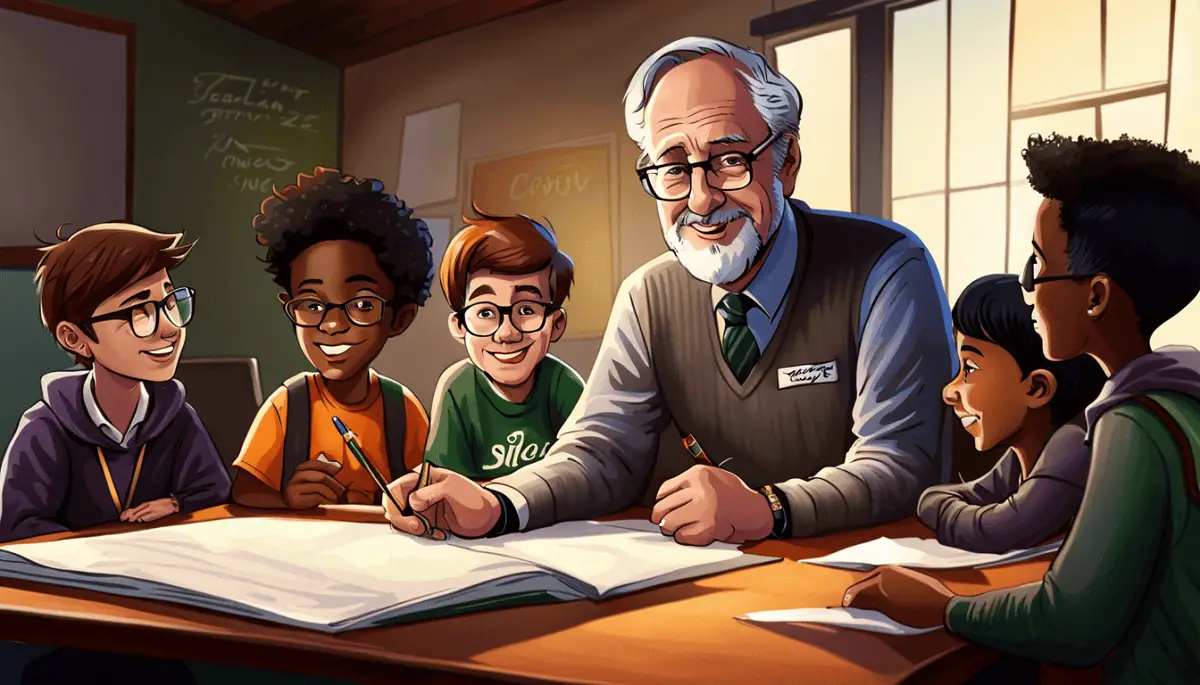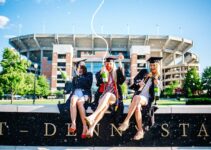This article deals with influential people in the educational system particularly in shaping the curriculum as we know today. It also talks about their specific contributions that can still be observed by the present generation of learners.
Let’s enumerate and discuss the six curriculum theorists and their contributions to education in chronological order. Later additions in this article include other key educational theorists who influenced curriculum planning and development to further enrich the discussion as well as AI’s influence in recent years.
Table of Contents
The Six Famous Curriculum Theorists
1. Franklin Bobbit (1876-1956)
Bobbit posits that the organization and sequencing of learning objectives and activities should be undertaken only after a thorough clarification of instructional tasks and activities. He perceives the curriculum as a scientific discipline that prioritizes the needs of the students.
This perspective elucidates the rationale behind the meticulous planning and organization of lessons based on the students’ needs. It underscores the imperative for teachers to address these needs effectively, thereby equipping students with the necessary skills and knowledge for their adult lives.
2. Werret Charters (1875-1952)
In addition to prioritizing the needs of students, Charters advocates for the alignment of objectives and corresponding activities with the subject matter or content of the curriculum. Consequently, department heads or course coordinators meticulously examine the congruence between objectives and subject matter as prepared by faculty members. This ensures that the educational goals are directly relevant to the course content.
3. William Kilpatrick (1871-1965)
For Kilpatrick, the purpose of curriculum is child development, growth, and social relationship. He also introduced the use of small group interaction, and the project method in which the teacher and students plan together. Thus, it is called as the child-centered curriculum.

4. Harold Rugg (1886-1960)
Harold Rugg, an American educator, significantly contributed to the development of the curriculum. He earned a bachelor’s degree in civil engineering and a doctorate in education, which he applied to reassess how curriculum was created. His work in the National Society for the Study of Education’s yearbooks provided groundbreaking syntheses of the fields of social studies and general curriculum. He introduced the concept of the development of the whole child, the inclusion of social studies, and the importance of curriculum planning in advance.
In the 1920s, Rugg advocated for an integrated, coherent program of social studies and focused the curriculum on students’ investigations of social problems. His influential work, “Man and His Changing Society”, encouraged students to explore potential solutions to social problems in the United States. This pattern of creating textbook series became a model in publishing still used in the early twenty-first century. His contributions continue to influence educators and curriculum designers, emphasizing the importance of an integrated, student-centered approach to learning.
5. Hollis Caswell (1901-1988)
Hollis Leland Caswell was an American educator and a significant figure in curriculum planning.
Caswell’s work emphasized the importance of the learner’s experience in curriculum development. He believed that curriculum should be designed around the needs, interests, and abilities of students, rather than being subject-centered. His approach was influential in shifting the focus of curriculum development towards a more student-centered model.
His contributions to the field of education have had a lasting impact, shaping the way curriculum is designed and implemented in schools today.
6. Ralph Tyler (1902-1994)
And as to the hallmark of curriculum development as a science, Ralph Tyler believes that curriculum should revolve around the students’ needs and interests. The purpose of curriculum is to educate the generalists and not the specialists, and the process must involve problem solving. Likewise, subject matter is planned in terms of imparting knowledge, skills and values among students.
To sum it up, the famous curriculum theorists have almost similar views. All of them believe that the curriculum should be learner-centered – addressing the needs and interests of the students. All of them have salient contributions to the educational system of the world today.
If you are an observant student, you might ask the following questions about your teachers:
- Why is it that we are required to do projects, solve problems, and work in groups?
- Why is it that our teachers are being observed in class, and their lesson plans or syllabi are checked?
- Why is it that all of us should take social studies, and not only the 3Rs?
- Why are the lessons being prepared in advance?
- Why should we experience what we have learned?
- Why do our teachers integrate values in our lessons?
- And why is it that the school is after our development as whole individuals (to become generalists) and be ready to face life’s challenges?
Key Educational Theorists Who Influenced Curriculum Development
As education progresses through time, the work of key theorists such as Jean Piaget, Maria Montessori, Lev Vygotsky, John Dewey, B.F. Skinner, Jerome Bruner, Howard Gardner, Benjamin Bloom, Paulo Freire, and David Kolb has profoundly influenced how school curricula are designed for different stages of learning.
Here is a brief description of these theories and their applicability to different levels of learning.
Related Post: Theories of Education: 10 Groundbreaking Ideas That Shaped Learners Around the World
Foundational Education (Early Childhood and Primary Grades)
Montessori’s child-led approach transformed early education curricula by prioritizing independence, sensory exploration, and self-paced activities, now embedded in thousands of Montessori schools worldwide. Piaget’s stages of cognitive development guide the sequencing of concepts in early curricula to match children’s cognitive readiness, ensuring content moves from concrete to abstract understanding. Vygotsky’s sociocultural theory and Zone of Proximal Development underpin collaborative activities, guided instruction, and scaffolding techniques in early and elementary curricula. Skinner’s behaviorist principles influence structured routines, reinforcement strategies, and mastery-based progressions often used in classroom management and skills instruction.
Middle to Secondary Education
Dewey’s “learning by doing” philosophy shaped curricula to include project-based units, real-world problem-solving, and cross-disciplinary integration, ensuring students see connections between school subjects and life outside the classroom. Bruner’s spiral curriculum and discovery learning models encourage inquiry, exploration, and revisiting concepts at deeper levels, a practice visible in science, math, and humanities curricula. Gardner’s theory of multiple intelligences expanded curriculum design to include the arts, physical education, interpersonal projects, and differentiated instruction, catering to diverse learning strengths in adolescent education.
Advanced and Higher Education
Bloom’s taxonomy serves as a universal framework for setting higher-order learning goals, aligning assessments, and structuring curricula that balance knowledge acquisition, analysis, evaluation, and creation — widely applied in both secondary and post-secondary education. Freire’s critical pedagogy influences curricula that encourage learners to question societal structures, engage in problem-posing dialogue, and connect academic learning to social transformation, especially in social sciences, humanities, and adult education programs. Kolb’s experiential learning cycle informs curricula in higher education, corporate training, and professional programs by emphasizing active experimentation, reflection, and real-world application of knowledge.
Global and Current Applications
Bloom’s taxonomy is the most widely used framework globally for curriculum planning and assessment. Piaget’s and Vygotsky’s developmental insights dominate early and primary education programs, while Montessori methods remain a major force in early childhood learning worldwide. Dewey’s, Bruner’s, and Gardner’s contributions are deeply embedded in middle and secondary curricula, particularly in inquiry-based and differentiated instruction models. Freire’s and Kolb’s frameworks are especially prominent in higher education, community education, and professional training.
More details on the respective theories of these educational theorists including easy-to-understand diagrams are found in Theories of Education: 10 Groundbreaking Ideas that Shaped Learners Around the World
The Role of Artificial Intelligence (AI)
Looking ahead, AI offers opportunities to personalize curriculum delivery by adapting content sequences to learners’ developmental stages, simulating experiential environments aligned with Kolb’s and Dewey’s models, and generating targeted assessments using Bloom’s taxonomy. It can also help identify and support different learning strengths in line with Gardner’s framework. However, educators must ensure AI supplements — rather than supplants — human-led teaching, safeguards student privacy, and respects the social, cultural, and ethical dimensions of education that these foundational theories uphold.
The answers to your questions are the people behind our educational system. They are the curriculum theorists.
Now, would you like to become one someday?
References
Bilbao, P. P., Lucido, P. I., Iringan, T. C., and Javier, R. B. (2008). Curriculum development. Philippines: Lorimar Publishing, Inc.
Burton, L. D. (2015, July 02). Harold Rugg | American Educational Reformer, “Man and His Changing Society” | Britannica. Encyclopedia Britannica. Retrieved December 25, 2023 from https://www.britannica.com/biography/Harold-Rugg
© 2014 December 3 M. G. Alvior | Updated 2025 August 14




Learning is a process that equips learners with the skills and knowledge they need to shape their attitudes hence curriculum has improved learning through the right planning of curriculum development.
difference between present curriculum and past curriculum. help please